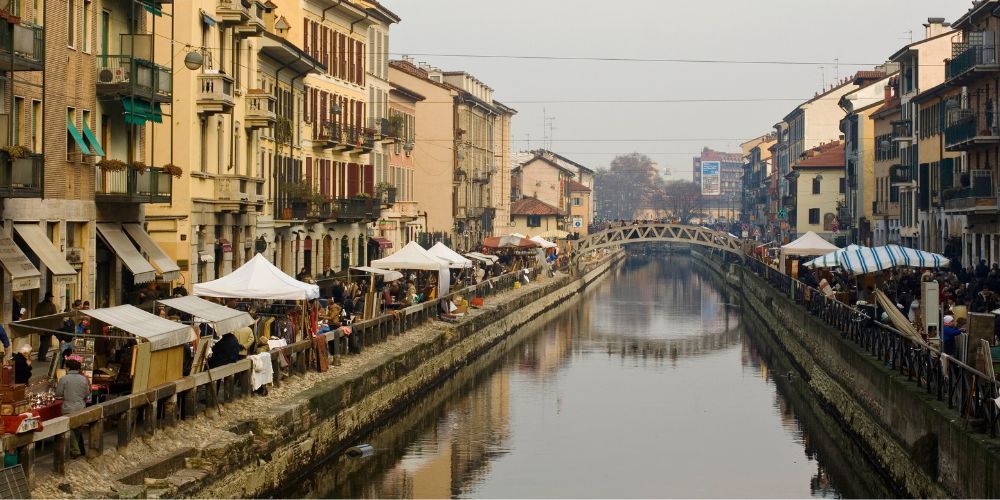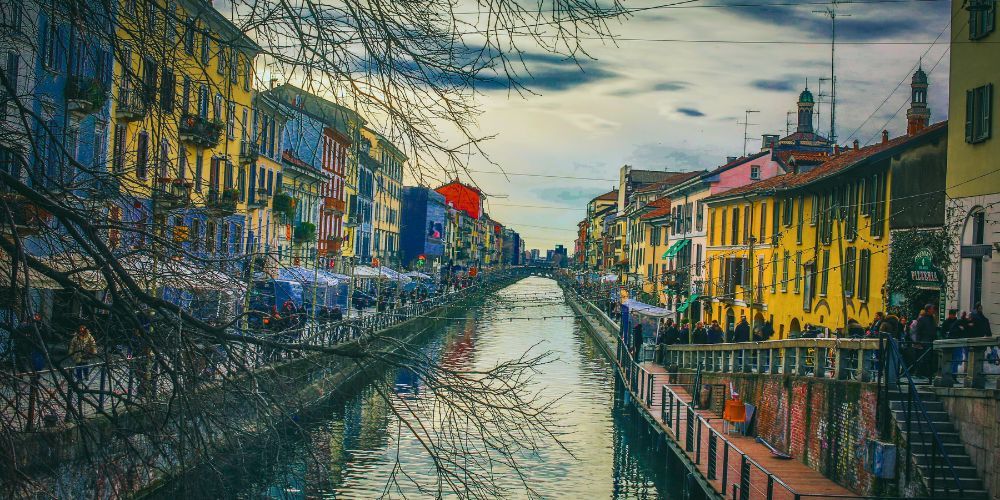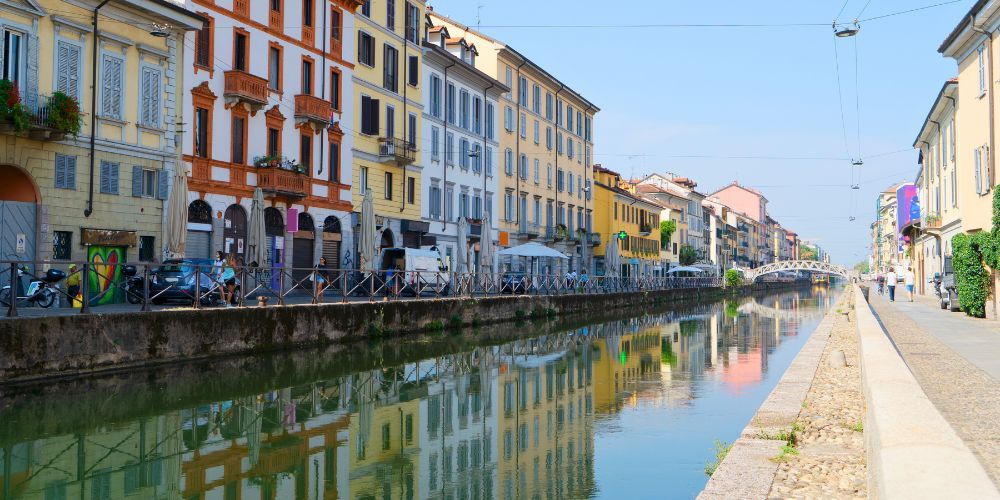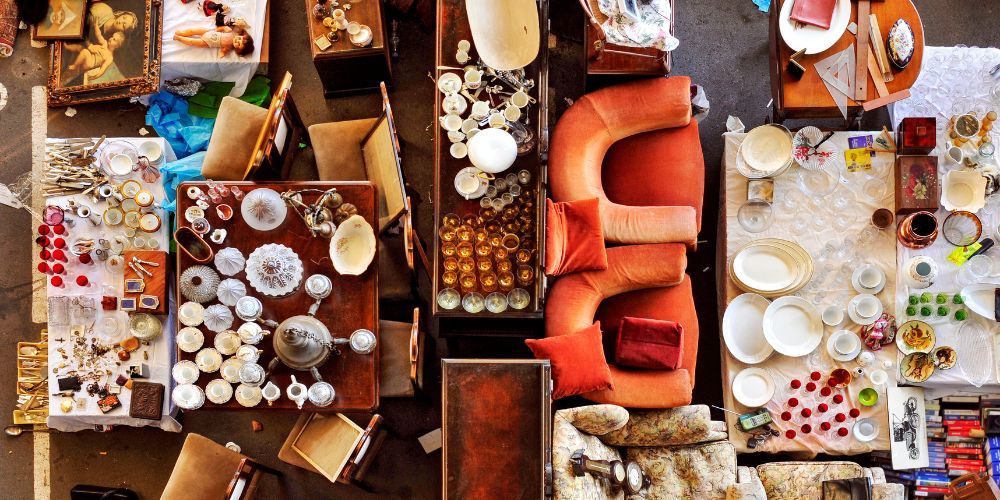Not only the capital of fashion, design and economy, Milan is a metropolis with many facets that do not expect anything but to surprise you for the uniqueness and generosity of their essence.
Hidden by a dense exoskeleton of arteries frets that spread animously in every direction defining the contours of the splendid tapestry of the 'rising city', pulsating an ancient heart made of water and stone: the Navigli. These artificial channels, silent witnesses of centuries of Milanese history, represent, today, one of the most famous and fascinating points of interest of the Lombardy metropolis.

Navigli: the Canal District of Milan

The Navigli is a place where a glorious past meets a lively present, where culture mixes with fun, creating a unique atmosphere able to conquer not only the heart of the Milanese themselves, but also that of visitors from all over the world.
Let’s go, then, to the discovery of this singular Milanese cut, exploring its history, its attractions, and learning to taste all that it has to offer.
The Navigli of Milan: a story carved in rock by water

The history of the Navigli is intrinsically linked to the development of Milan. Their construction, which began in the 12th century, was based on precise requirements: to irrigate the surrounding countryside and, above all, to create a network of navigable waterways.
The aim was to connect Milan, a city which in fact was not crossed by any watercourse, to more important rivers such as the Ticino and the Adda. This would have opened the doors to Lake Maggiore, Lake Como and, via the river Po, even to the Adriatic Sea.
The Naviglio Grande was the first to be made fully navigable around 1179. For centuries, barges loaded with all kinds of goods sailed through these waters, bringing salt, grain, coal, wine and essential raw materials to the city. Perhaps the most famous example is the transport of marble blocks from Candoglia, coming from the quarries of Lake Maggiore, used to build the very symbol of Milan: the Duomo.
Without the Navigli, the construction of this magnificent cathedral would have been an almost impossible task.
However, with the advent of railways and road transport in the 19th and 20th centuries, the commercial importance of the Navigli declined drastically. For reasons of public hygiene and to make room for the then emerging urban traffic, many sections inside the city were buried, changing the face of Milan.
Fortunately, the final sections of the Naviglio Grande and the Naviglio Pavese, which converge in the historic Darsena (the old city port), have survived. In recent decades, this area has experienced a remarkable revival.
From forgotten arteries they have transformed into one of the most fashionable and frequented places in the city, a process culminating with the redevelopment and reopening of the Darsena, which took place in 2015.
Living the Navigli, today, as a local

Today, walking along the "alzaie", the roads that border the Navigli, is one of those experiences not to be missed. On the Naviglio Grande, the atmosphere is lively, with an uninterrupted succession of clubs, shops and picturesque views over the typical warm-coloured railing houses. The Naviglio Pavese, slightly more collected, also offers suggestive corners. Walking here means immersing yourself in an almost bohemian atmosphere, observing the reflections on the water, crossing romantic bridges and discovering hidden courtyards.
A key stop is Vicolo dei Lavandai, an incredibly well-preserved corner on the Naviglio Grande. Here, an old covered public wash-house recalls the times when Milanese women went there to wash their clothes, offering a unique glimpse into the life of yesteryear.
Not far away is the Church of San Cristoforo sul Naviglio, a fascinating complex consisting of two small churches side by side, one Romanesque and one Gothic, particularly suggestive when illuminated in the evening.
The Navigli by boat

For those looking for an even more authentic and special experience, there is the possibility to explore the Navigli directly from the water. Several companies offer boat tours, mainly on the Naviglio Grande and in the Darsena.
Navigating slowly along the canal allows you to catch details otherwise invisible from the ground: the facades of the houses observed from a privileged point of view; the bridges crossed from below rather than from above; the stillness of the water in contrast with the liveliness of the bank.
These tours, which usually last about an hour, offer a unique and relaxing view of the canal district. It is a fascinating way to better understand the structure of the canals and admire their beauty from a historical and landscape perspective.
Before leaving, it is always advisable to consult the websites of the shipping companies to check up-to-date timetables, costs, boarding points and exact routes, which may vary according to the season. Booking in advance, especially during high season or weekends, is often a good idea to secure a seat.
Book your boat tour on the NavigliThe rite of the aperitif in milan

But what the Navigli are really famous not only in Italy, but also in the rest of the world, are the aperitifs. As the sun sets, especially from spring to autumn, the bars and clubs along the canals are enlivened by a new light and a new voice: a diverse crowd - students, young professionals, tourists, artists - creating a light and constant buzz and generating an energy that is contagious.
The aperitif, in Milan, is a real ritual: often you order a drink (a classic Spritz, a Negroni or a Gin Tonic, amongst the favourites; or, rather, a glass of wine or a beer), by means of which you have access to often generous buffets or you receive cutlery full of all kinds of delicacies. The aperitif is the perfect time to relax, chat and enjoy the sparkling atmosphere of the Navigli in the evening.
Aperitif on the Navigli?Shopping along the Navigli

In addition to food and drink, the Navigli is an ideal place for alternative shopping. Away from the bustling downtown commercial arteries, you’ll find up-and-coming designer boutiques, vintage clothing and accessories shops, art craft shops, contemporary art galleries and independent bookstores.
An event not to be missed for true vintage fans is the 'Antiques Market', held on the last Sunday of each month (except in August) along the Naviglio Grande: hundreds of stalls exhibit furniture, vintage items, vinyl, books and all sorts of curiosities, transforming the wake in a fascinating open-air museum.
Listen to the podcast version of the article with Monna Lisa and Leonardo's voices
About the author
Written on 20/05/2025




Gaetano Del Gaiso
Want to discover more about one of the most beautiful districts in the 'rising city'? Here is a complete guide on the Navigli of Milan.